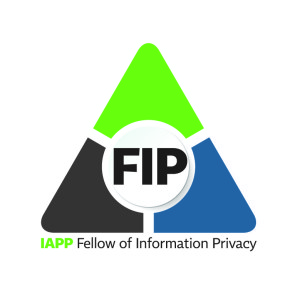Talk privacy and network with local members at IAPP KnowledgeNet Chapter meetings, taking place worldwide.
IAPP Job BoardLooking for a new challenge, or need to hire your next privacy pro? The IAPP Job Board is the answer.
IAPP CalendarReview a filterable list of conferences, KnowledgeNets, LinkedIn Live broadcasts, networking events, web conferences and more.
 Chinese Personal Information Protection (CIPP/CN)
Chinese Personal Information Protection (CIPP/CN)
Learn compliance with the three major laws (PIPL, CSL, DSL) forming the framework of Chinese privacy.
Artificial Intelligence Governance ProfessionalLearn how to surround AI with policies and procedures that make the most of its potential by reducing its risks.
European Data Protection (CIPP/E)Understand Europe’s framework of laws, regulations and policies, most significantly the GDPR.
U.S. Private-Sector Privacy (CIPP/US)Steer a course through the interconnected web of federal and state laws governing U.S. data privacy.
Canadian Privacy (CIPP/C)Learn the intricacies of Canada’s distinctive federal/provincial/territorial data privacy governance systems.
Privacy Program Management (CIPM)Develop the skills to design, build and operate a comprehensive data protection program.
Privacy in Technology (CIPT)Add to your tech knowledge with deep training in privacy-enhancing technologies and how to deploy them.
Foundations of Privacy and Data ProtectionIntroductory training that builds organizations of professionals with working privacy knowledge.
Privacy Law Specialist Training (PLS)Meet the stringent requirements to earn this American Bar Association-certified designation.
 CIPP/CN Certification
CIPP/CN Certification
For professionals who are responsible for compliance with China's major privacy laws - PIPL, DSL, CSL.
 AIGP Certification
AIGP Certification
Ensures individuals responsible for AI systems can reduce the risks associated with this technology.
 CIPP Certification
CIPP Certification
The global standard for the go-to person for privacy laws, regulations and frameworks
 CIPM Certification
CIPM Certification
The first and only privacy certification for professionals who manage day-to-day operations
 CIPT Certification
CIPT Certification
As technology professionals take on greater privacy responsibilities, our updated certification is keeping pace with 50% new content covering the latest developments.
 FIP Designation
FIP Designation
Recognizing the advanced knowledge and issue-spotting skills a privacy pro must attain in today’s complex world of data privacy.
 Privacy Law Specialist
Privacy Law Specialist
The first title to verify you meet stringent requirements for knowledge, skill, proficiency and ethics in privacy law, and one of the ABA’s newest accredited specialties.
 Certificação CDPO/BR
Certificação CDPO/BR
Mostre seus conhecimentos na gestão do programa de privacidade e na legislação brasileira sobre privacidade.
Access all reports and surveys published by the IAPP.
The IAPP publishes longform, web-based resource articles to provide in-depth analysis on relevant topics in the privacy space.
Access all white papers published by the IAPP.
Access all infographics published by the IAPP.
The Privacy Advisor Podcast provides interviews with the privacy world's most interesting voices.
The IAPP's video library provides insights, reactions and opinions on a range of topics, including regulatory developments, areas of privacy operations management and more.
On this topic page, you can find the IAPP’s collection of coverage, analysis and resources covering AI connections to the privacy space.
On this page, you’ll find articles and tools to help you get a basic understanding of the job of the privacy pro and data protection laws and practices around the globe.
 Data Protection Intensive: UK
Data Protection Intensive: UK
Explore the full range of U.K. data protection issues, from global policy to daily operational details.
 Global Privacy Summit
Global Privacy Summit
The largest forum for connecting with other privacy, AI governance and digital responsibility professionals over top issues in law, policy and operations.
 AI Governance Global
AI Governance Global
A new event in Brussels for business leaders, tech and privacy pros who work with AI to learn about practical AI governance, accountability, the EU AI Act and more.
 Canada Privacy Symposium
Canada Privacy Symposium
Leaders from across the Canadian privacy field deliver insights, discuss trends, offer predictions and share best practices.
 Privacy. Security. Risk. (P.S.R.)
Privacy. Security. Risk. (P.S.R.)
P.S.R. focuses on the intersection of privacy and technology. Explore the 2024 agenda and register today.
 Europe Data Protection Congress
Europe Data Protection Congress
Gain actionable insights from European experts to improve compliance and best practices for your data protection operation. Register today to secure your seat.
 ANZ Summit
ANZ Summit
Gain exclusive insights on privacy issues affecting business in Australia and Aotearoa New Zealand.
 Asia Privacy Forum CFP
Asia Privacy Forum CFP
The call for speaking proposals is open. Submit a proposal to share your expertise on your favorite privacy topic at Forum 2025.
Speak at an IAPP EventView our open calls and submission instructions.
Sponsor an EventIncrease visibility for your organization — check out sponsorship opportunities today.

